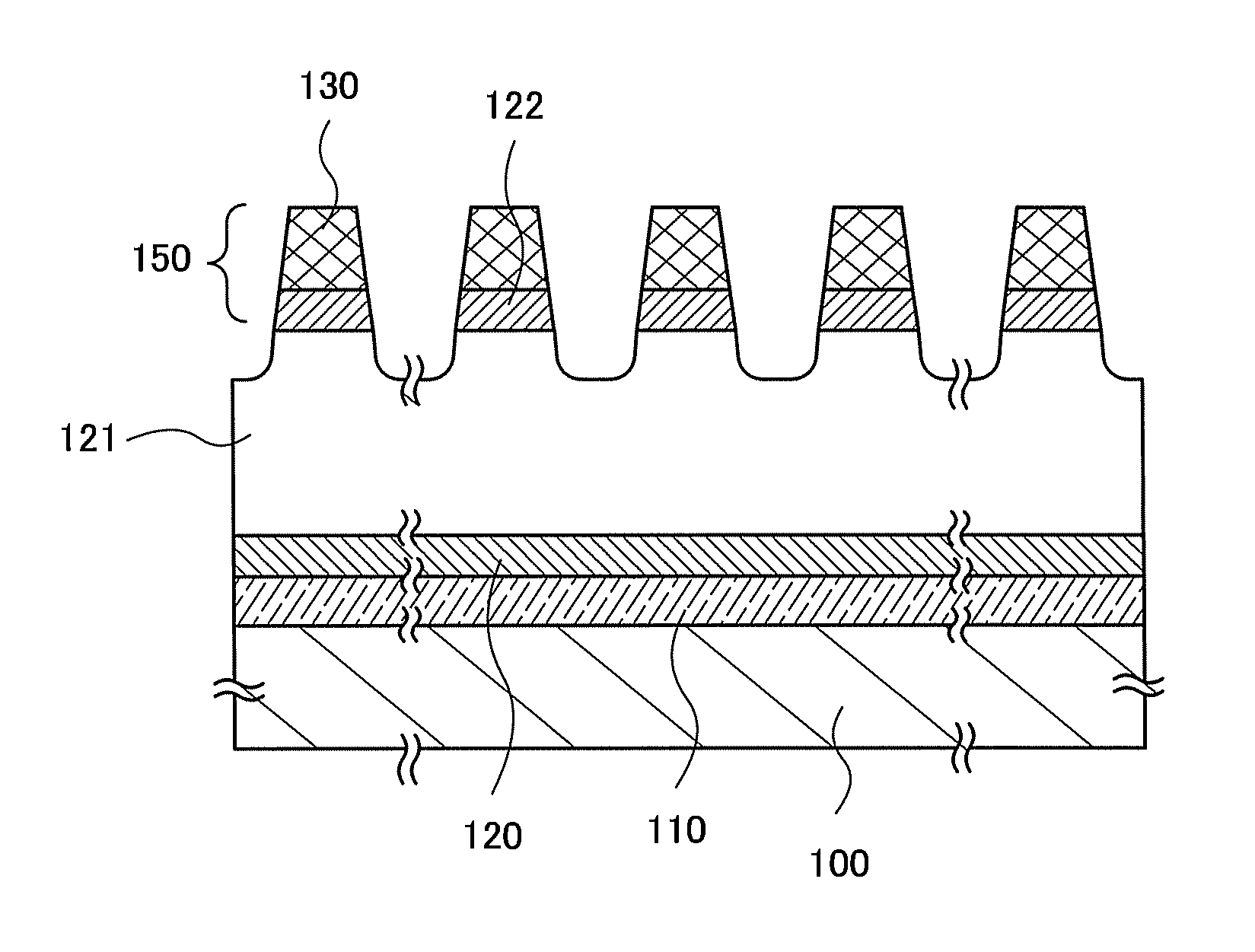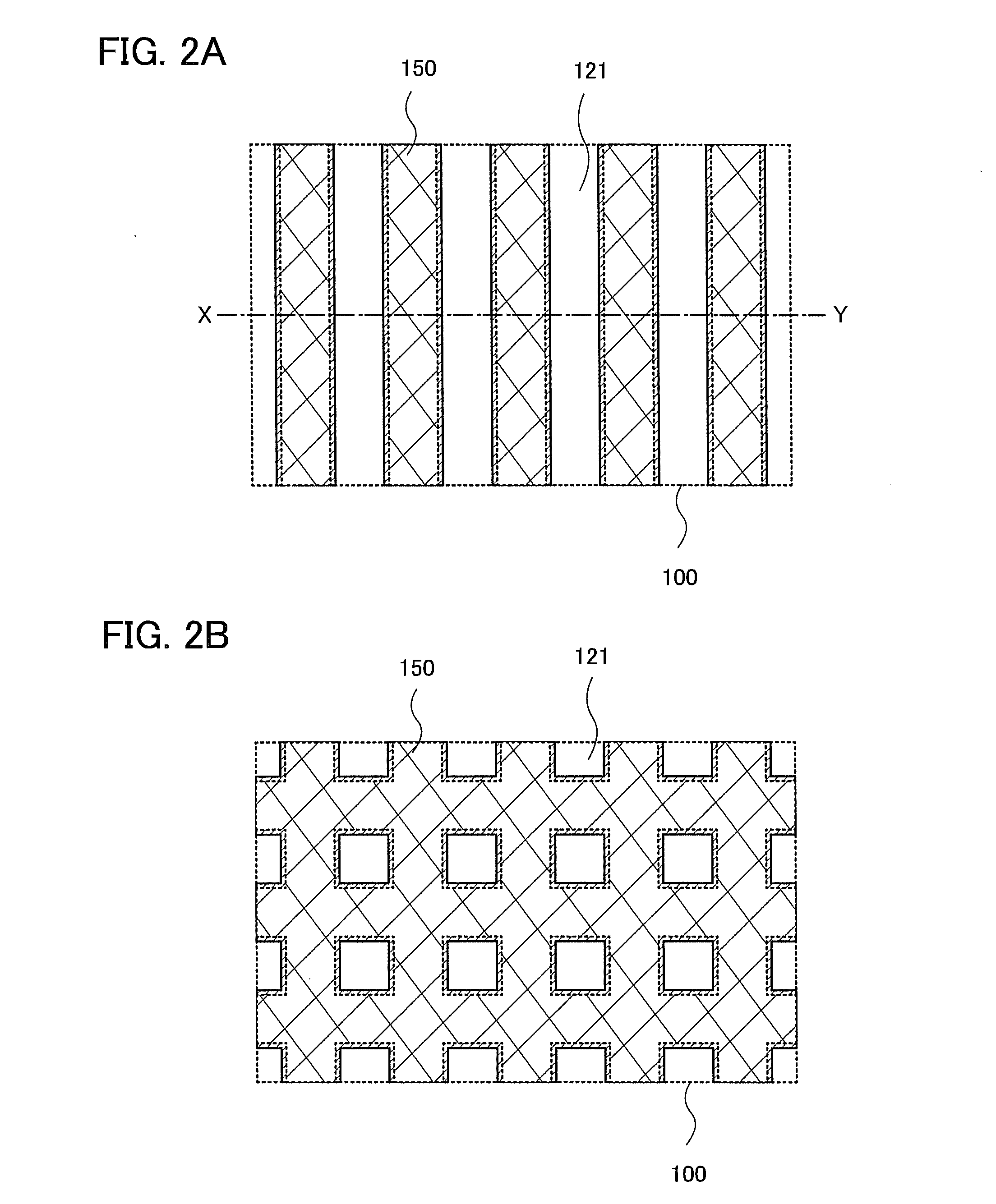Photoelectric Conversion Device and Manufacturing Method Thereof
- Summary
- Abstract
- Description
- Claims
- Application Information
AI Technical Summary
Benefits of technology
Problems solved by technology
Method used
Image
Examples
embodiment 1
[0034]One embodiment of the present invention is an nip or pin type non-single-crystal thin film photoelectric conversion device in which a light-transmitting conductive film and an impurity semiconductor layer which have an opening are formed over an intrinsic semiconductor layer. In addition, the thickness of the intrinsic semiconductor layer under the opening is smaller than that of the intrinsic semiconductor layer under the light-transmitting conductive film and the impurity semiconductor layer.
[0035]The structure of the photoelectric conversion device according to one embodiment of the present invention will be described. The photoelectric conversion device according to one embodiment of the present invention has, as is shown in the cross-sectional view of FIG. 1, a first electrode 110, a first impurity semiconductor layer 120, an intrinsic semiconductor layer 121, a second impurity semiconductor layer 122, and a second electrode 130 over an insulator 100. Hereinafter, a singl...
embodiment 2
[0062]In this embodiment, an example of a method for manufacturing the photoelectric conversion device according to one embodiment of the present invention will be described in detail with reference to drawings. Note that a description of the same parts as those of the above embodiment is omitted or partly simplified.
[0063]First, the first electrode 110 is formed over the insulator 100 (see FIG. 3A).
[0064]For the insulator 100, any insulator that can withstand a manufacturing process of the photoelectric conversion device according to the present invention can be used without particular limitation. A substrate having an insulating surface or an insulating substrate can be used. A glass substrate is preferably used because a large substrate can be obtained and cost can be reduced. For example, large substrates distributed as glass substrates for liquid crystal displays which have a size of 300 mm×400 mm of the first generation, 550 mm×650 mm of the third generation, 730 mm×920 mm of ...
embodiment 3
[0094]In this embodiment, an integration method for a photoelectric conversion device according to one embodiment of the present invention is described in detail with reference to drawings. Note that a description of the same parts as those of the above embodiment is omitted or partly simplified.
[0095]FIG. 6A is a plan view of the integrated photoelectric conversion device of this embodiment. FIGS. 6B and 6C are cross-sectional views taken along lines A-A′ and B-B′ in FIG. 6A, respectively. Although an example where two isolated cells are series connected for integration is shown in this embodiment, more cells can be integrated in order to obtain desired voltage.
[0096]In a usual nip thin film photoelectric conversion device, if steps up to the formation of the second electrode 130 are consecutively performed, integration would be difficult in terms of the structure. Therefore, a conductive film is formed after an element isolation step. In such a case where the film-forming steps ar...
PUM
 Login to View More
Login to View More Abstract
Description
Claims
Application Information
 Login to View More
Login to View More - R&D
- Intellectual Property
- Life Sciences
- Materials
- Tech Scout
- Unparalleled Data Quality
- Higher Quality Content
- 60% Fewer Hallucinations
Browse by: Latest US Patents, China's latest patents, Technical Efficacy Thesaurus, Application Domain, Technology Topic, Popular Technical Reports.
© 2025 PatSnap. All rights reserved.Legal|Privacy policy|Modern Slavery Act Transparency Statement|Sitemap|About US| Contact US: help@patsnap.com



